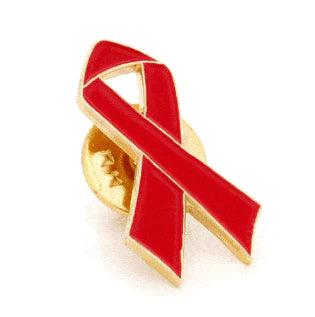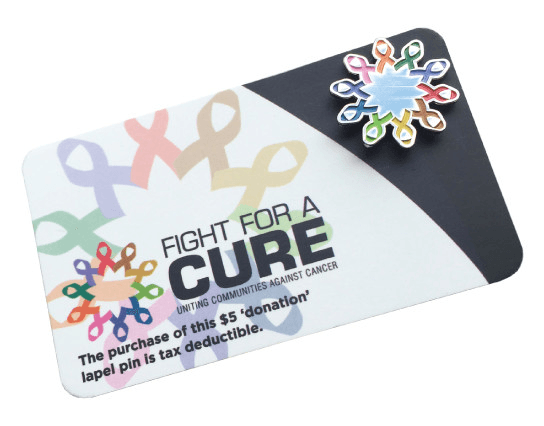What You Didn't Expect When Ordering Custom Lapel Pins

People are reminded of the honors and distinctions the recipient has received when they see custom lapel pins on a blazer or uniform. The custom pins serve as a beacon, alerting others to occasions or experiences held in remembrance of a person that the attendees will never forget. But the majority of people overlook it or are unaware of it - that custom lapel pins are a useful accessory and that not all of them are created equally. To educate those who are unaware of what lapel pins are. Here are things about custom lapel pins you probably didn't know:
CUSTOM LAPEL PINS: WHAT YOU NEED TO KNOW ABOUT
HARD CUSTOM ENAMEL PINS WORKS HARD
Soft enamel pins and hard enamel pins are similar, but they are clearly different. The tempering is what differentiates them even if they both have the same die-cast, colorful construction. After cooling, the enamel is heated to improve its strength in order to make it hard. In the end, this produces an incomparable crisp, smooth finish for any robust custom lapel pins that requires fine details.
SOFT CUSTOM ENAMEL PINS ARE KING
Or perhaps we could say fit for a king on a shoestring? Probably the most typical accessory you see is a soft enamel pin. Although it is more affordable, the pin still has the strength and vibrancy that one would expect when designating a special occasion, passion, or team. It is the most common and well-liked kind of lapel pin due to its vivid, three-dimensional appearance.
CUSTOM LAEPL PINS CAN SLIDE, DANGLE, SPIN, AND BLINK
Play with it rather than just pinning it. The moving components on lapel pins can be blinking lights, a piece that spins or dangles or slides up and down or even bobbles. If your pin had moving parts, people would want to play with it as well as learn about it, contrary to what you might have thought. The novelty can't be stopped.
CUSTOM LAPEL PINS MAKES A STATEMENT
Custom lapel pins may not actually speak, but it still conveys a message, attracts attention, prompts inquiries, and—most importantly—allows you to share a personal narrative about the particular pin you are wearing or displaying.
CUSTOM PINS CAN HAVE PICTURES IN THEM
Another option to create custom lapel pins, which we neglected to include in the production procedure. If you've ever questioned how a loved one's characteristics or a kid's team's emblem were so perfectly caught by an accessory. With this method, any jacket or shirt may be customized with an exact replica of a photograph. The best aspect is that because it lacks the raised lines of enamel pins and most designs have pre-made templates, it can be made in one of the shortest turnaround times of any pin production.
CUSTOM LAPEL PINS ARE OKAY WITHOUT PINS
Even though the word "pin" comes from the Old English word for "peg," today's inventions don't always require the sharp metal object to fasten it. A pin with a butterfly clutch is still the most typical way to wear one, although other styles have also gained popularity. This attachment is now fastened in place using screws, magnets, and safety pins. By other, less conventional means, attach them to your cufflinks, tie clip, or keychain instead of the hanging it like a typical pin.
TRADE YOUR CUSTOM PINS
Nowadays, custom lapel pins are used for more than just fashion or team support. Many people engage in a pastime or interest known as "pin trading," whereby they exchange and amass huge, vibrant, and distinctive pins, frequently used for team sports. The goal is to have the unique, exquisite custom laep pins, regardless of whether the team wins or loses.

BRIEF LAPEL PINS HISTORY
A lapel pin is a small, round object that is affixed to the lapel of a jacket, suit coat, blazer, or comparable article of clothing. The pin can be worn on either side of the lapel, depending on how the user wants to show support for a cause or group. It is intended to be worn on the left side of the lapel. The lapel pin was first worn to demonstrate one's support for a political party or a particular organization in the late 19th century. Numerous other organizations and groups, including fraternities, veterans' associations, religious organizations, and others, quickly adopted the practice.
Lapel pins were frequently used, like other insignia, to separate members from non-members. Early in the 20th century, lapel pins started to be worn to indicate the wearer's membership status. Since it has become more difficult to distinguish who belongs to what group thanks to the popularity of wearing jackets without any sort of insignia and the rise of casual dress, lapel pins have become less common.
WHY DO PEOPLE LIKE CUSTOM LAPEL PINS?
Custom enamel pins are commonplace in the world in which we live. People attach them to their shoes, backpacks, and even their clothing. But why are there individual enamel pins? What's more, why are they so well-liked?
In the late 1800s, enamel pins first gained popularity as a way to support causes and organizations. People would, for instance, wear pins to demonstrate their support for the temperance movement or the suffragette movement. However, during the First World War, enamel pins really saw a surge in popularity. Many people still wear enamel pins for the same reason that soldiers once did: to display their pride in their nation. Because enamel pins may be personalized, their creation has grown in popularity. In order to foster a sense of community among their members, organizations frequently give away personalized enamel pins.
Additionally, as a strategy to promote their brand, companies frequently send out custom enamel pins to both customers and staff. Custom enamel pins are a terrific choice whether you're looking for a promotional gift or a method to show your support for a cause.









